9 Thai Chilies Substitutes
Are Thai chilies substitutes hard to find? What can I use to replace this chili pepper? It is time to eliminate your worries because everything you need to know about it is finally here.
Thai chilies might not be available in many places. Therefore finding its replacement is a must. More importantly, you also know the characteristics of not only Thai chili peppers but also others. So come with me; I promise these alternatives will not let you down.
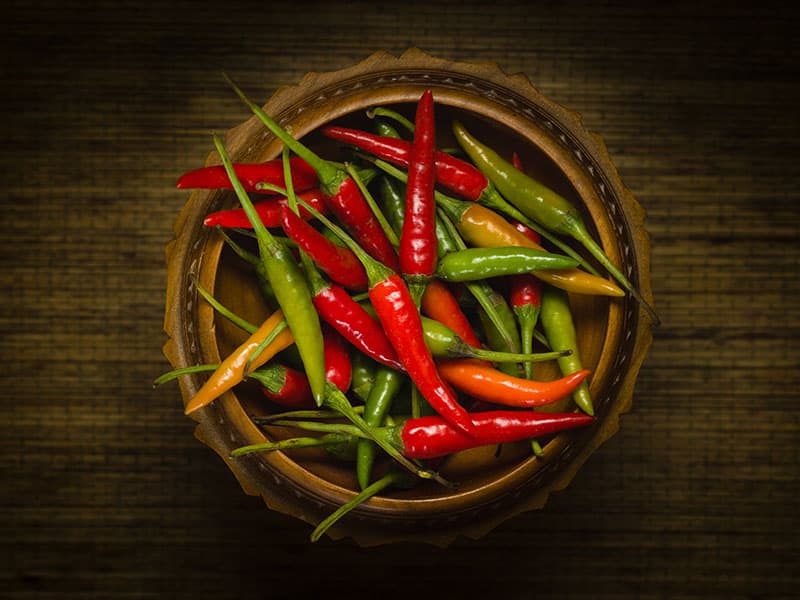
Thai Chilies – An Indispensable Ingredient In Asian Cuisine
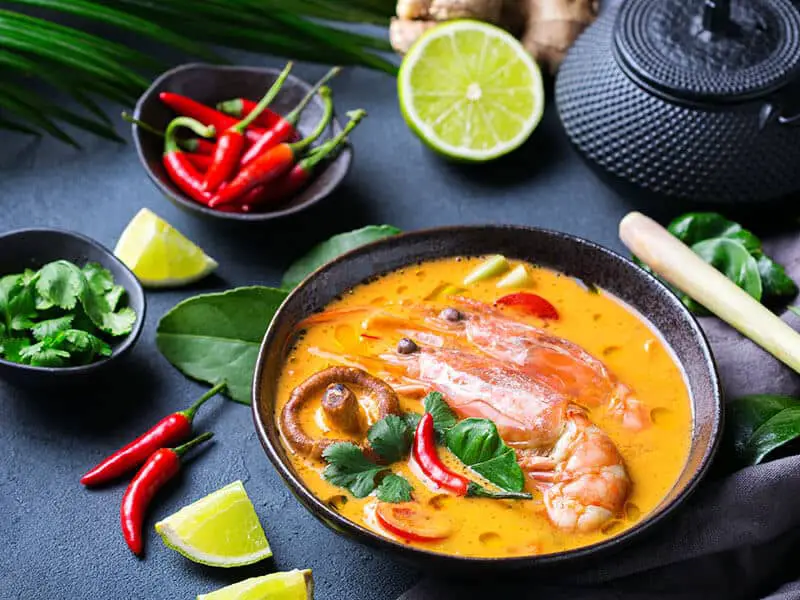
In fact, there are more than 79 varieties of Thai chilies. However, most chefs acknowledge that bird’s eye chili (or bird’s chili) is the most authentic and basic Thai chili type. So in this post, I will primarily emphasize this variety and its replacement.
Bird’s eye chili is a famous chili pepper in Thailand and Southeast Asia countries. This plant belongs to Capsicum annuum spices. You can mostly find bird’s eye chili in Southeast Asia and Ethiopia today; however, its origin is from Central and South America and Mexico (1).
Regarding the appearance, Thai chilies are typically small and thin, with pretty-pointed tops. Its shape can be straight or slightly curved. The chili is from 1.2 to 2 inches (3 to 5 cm) in length, and the colors are green (unripe), red (ripe), or orange, depending on their maturity level.
Though they have a small shape, their spiciness will amaze you or even burn your mouth. With 50,000 to 100,000 Scoville units, people consider this Thai chili as extremely spicy chili pepper.
Besides the strong heat, Thai chili’s flavor is fruity, peppery. Either fresh or dried, it is commonly used in soups (e.g., Tom yum – Thailand delicacy), sauces, curries, salads, sambals (in Indonesian cuisine), pickles, marinades, stir-fries, or as a topping.
If you want to pickle your pepper, let’s follow this instruction.
How Many Substitutes For Thai Chilies?
You do not need other Thai-originated chilies to replace this chili. Instead, I will show you 9 popular substitutes, and some of them are easy for you to buy in the USA. But first, let’s check the following table for brief information.
Jalapeno Pepper
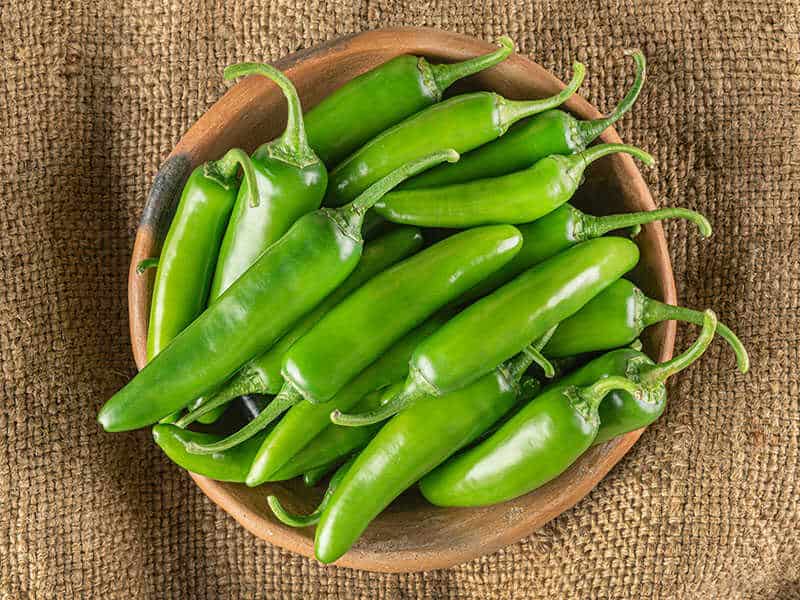
Scoville Units: 2,500 – 8,000 SHU
Jalapeno pepper is a versatile pepper that can act as other chilies’ alternative. And Thai chili is not the exception.
The best thing about this chili type is you can easily buy them in supermarkets or grocery stores, so whenever the recipes call for Thai chili, go for jalapeno pepper.
Come with lower heat (15 times milder than Thai chilies); however, the brightness, grassiness, and bitterness in this pepper’s flavor will satisfy you on many levels. Also, if you are searching for a less-hot replacement, no chili can beat jalapeno pepper.
The appearance of this pepper is different from the Thai type. Their length is from 2.5 to 3 inches and has a pod-like shape. Similar to bird’s eye chili, the unripe jalapeno pepper is green with a milder grassy taste.
In reality, the heat of jalapeno might be varied, depending on their varieties. But overall, feel free to double the amount of jalapeno pepper for replacing Thai chilies. Or you can add more until satisfied with the heat.
This pepper also plays an important part in many famous cuisines like Mexican, Tex-Mex, or Thai delicacies. Though they can go great in various recipes, they can shine best in salads, salsas, veggies, sandwiches, or stuffing dishes.
Serrano Pepper
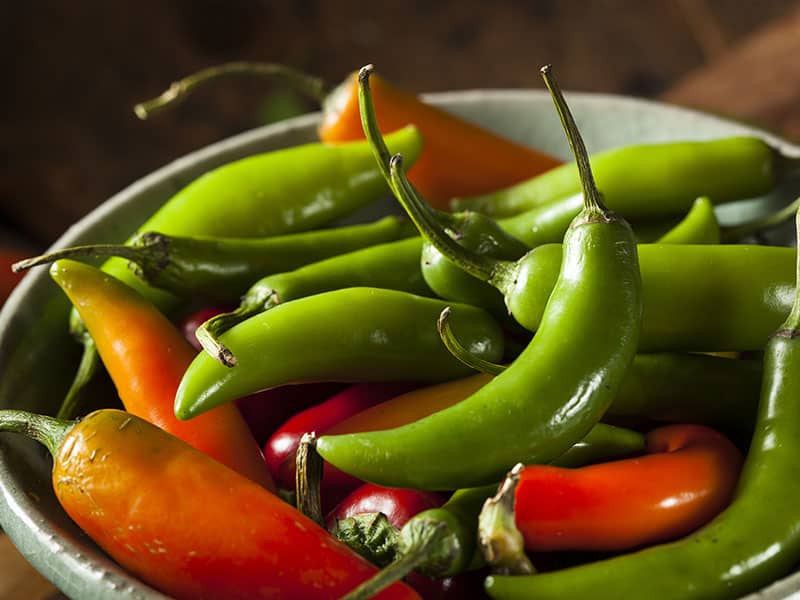
Scoville Units: 10,000 to 23,000 SHU
If you want a higher heat-kick substitute, serrano peppers might be your best bet. Compared to Thai chili, this pepper is at least 4 times milder in spiciness. But what makes them still a good alternative are their versatility and availability.
Serrano peppers also come from Mexico – an American neighbor, so you can find them at stores easier. Moreover, you will barely find this chili in dried form as they have thick flesh.
Serrano pepper flavor is also grassy and bright with a crispier bite. You can treat them the same way that you use Thai chilies in many recipes. And I am sure chopped fresh serrano pepper will be the best exchange for fresh Thai peppers.
Like jalapeno, you can complement this pepper to your salsas, sauces, etc., or use them as garnishing in fresh form. Plus, they are especially wide-used in Mexican and Thai dishes.
Anyway, whether they are eaten raw or cooked, serrano pepper will please your stomach. The estimated ratio for this substitution is 1 Thai chili mightequal 3 serrano chilies.
Cayenne Pepper
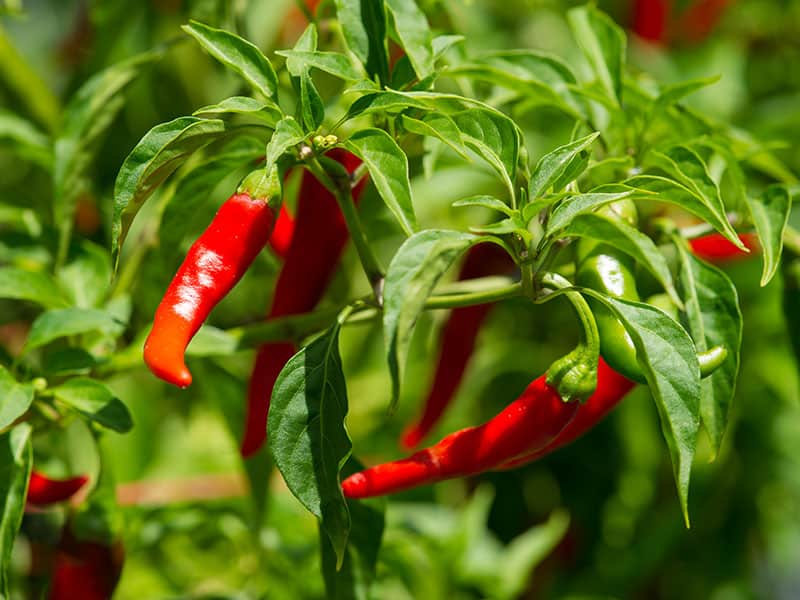
Scoville Units: 30,000 – 50,000 SHU
The third alternative option for Thai chilies is Cayenne pepper – a well-known chili pepper around the world. However, their origin is still in debate as some believe this chili originates from South American; some think they are from Cayenne city in French Guiana.
Surprisingly, they have a similar thin, long, and curved shape like Thai peppers but in bigger and longer sizes (around 3 to 5 inches in length). However, they are mostly sold in dried powder or flake form and are referred to as red pepper.
Cayenne pepper’s spiciness is medium-hot that ranges between Serrano and Thai chilies. Moreover, it has a mild, neutral, and peppery flavor, making them become a favorite pepper in many cuisines.
The best substitution ratio is 1:1, so 1 part of fresh or dried Cayenne pepper can shine as 1 part of Thai ones.
This replacement can work in numerous dishes like soups, pizzas, baked desserts, salsas, sauces, etc., especially in Cajun and Asian recipes. And thanks to their mild flavor, Cayenne pepper will not overpower others’ taste.
Wanna know the benefits that cayenne can bring to your health? This one will reveal it for you.
Habanero Pepper
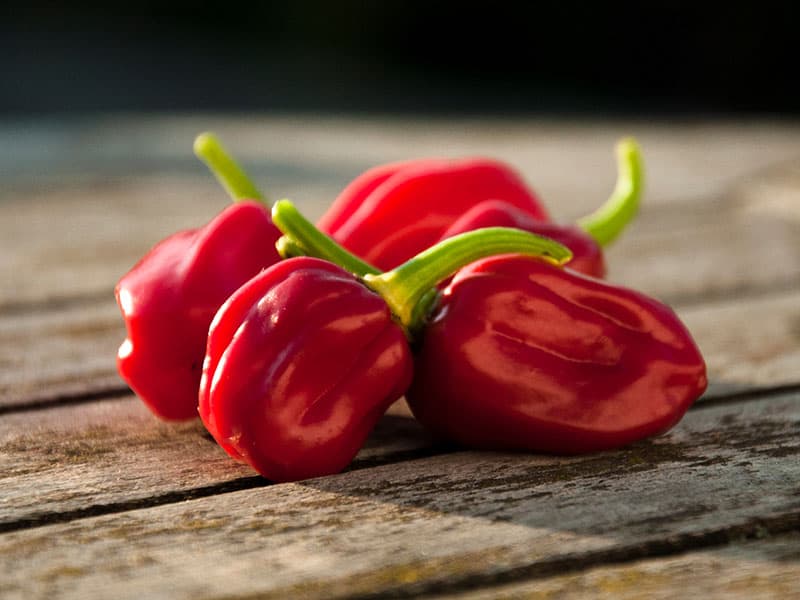
Scoville Units: 100,000 – 350,000 SHU
If you want to challenge your taste buds (in a safe way, of course), try this habanero chili pepper instead of Thai chilies and tell me how you feel.
This chili is from Amazon, then spread to Mexico. Their name is derived from La Habana (or Havana) city in Cuba. However, Cuban people barely use habanero chili in their cuisine (2). Pretty strange, isn’t it?
This chili is 1 to 3 inches long with a sweet, tropical, fruity, smoky taste. Though their SHU is from 100,000 to 350,000 SHU, they are not the hottest chili.
There are also various varieties with different colors. Habanero can be red, born, black, or orange. One of the hottest varieties is the orange ones.
You can replace Thai pepper with this chili in recipes that require a high level of hotness, like Mexican, other South American, or Caribbean islands foods.
But as it is too spicy, please remember to use them sparingly. You should wear gloves while handling or cutting this pepper to prevent unexpected burns.
Scotch Bonnet Pepper
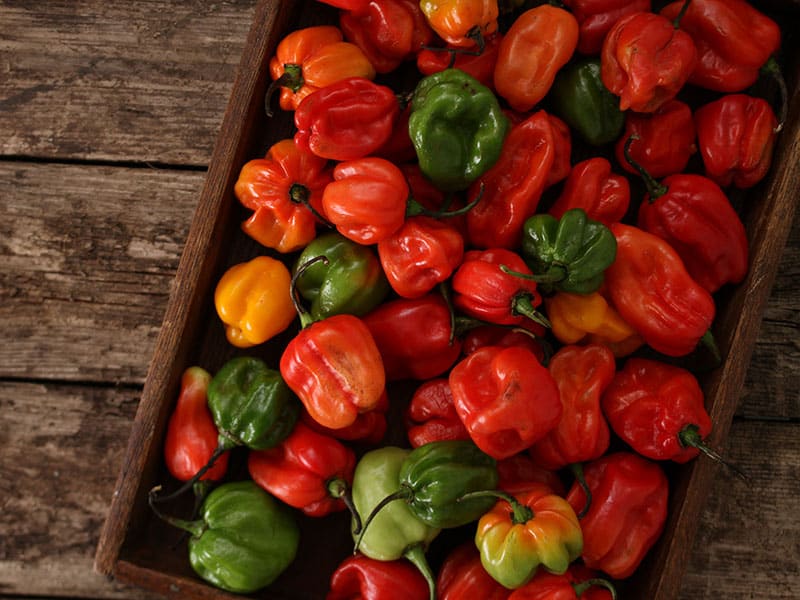
Scoville heat units: 100,000 – 350,000 SHU
Scotch bonnet chili pepper (or called Bahama Mama, Jamaican Hot, Bahamian, or Martinique pepper) is a super hot chili from Caribbean areas. This type of pepper is actually a cousin of habanero pepper. So yes, you can use this chili to swap for Thai chilies.
The reason it has this name is from its shape, which looks like a Scotsman’s bonnet. Matured Scotch bonnet color is red or yellow normally, but it also depends on this chili’s varieties. Some might be in peach, orange, or brown color.
They also have a small squashed shape ranging from 1 to 2.5 inches in length and 1 to 2 inches in diameter, which is quite similar to habanero pepper.
But with this alternative, make sure you are a spicy lover because their heat is much higher than Thai chilies. Plus, Scotch bonnet pepper’s flavors are fruity, earthy, tropical, and lightly sweet. Some people believe this chili taste is a combination of cherry, apple, and tomato.
For the best result, you should cut a tiny piece, chew and taste this chili before adding them to your meal to avoid it being too intense and ruin your food. Or you can remove the white part inside to reduce their spiciness.
In case you love their flavor and heat, try Scotch bonnet pepper in your sauces, salsa, marinades, jerk dishes (chicken or pork), or any Caribbean foods.
Using Scotsman’s bonnet to make sauces is a brilliant idea to add to your meat, stews, or salads.
Chile de Árbol
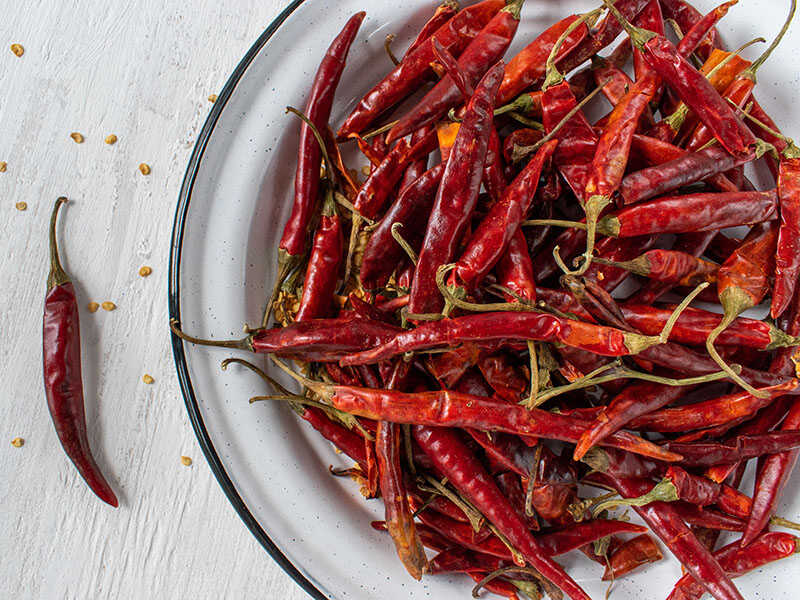
Scoville units: 15,000 – 30,000 SHU
Here is another milder spiciness that comes from another Mexican chili – Chiles de árbol. Similar to their relative – cayenne pepper, this one is pretty versatile in cooking and replacing for Thai type as well.
Chiles de árbol has a thin curved body with a length of around 2 to 3 inches. Their initial color is green, then turns red when matured. But what makes them so unique is that they can still keep this beautiful red color even when dried. So people also use it to create chile wreaths.
The more common form of this chili that you can find at stores is dried ones. Their flavor is also interesting. Unlike others, chiles de árbol has a nutty, smoky taste with a mild grassy tone.
Add them, particularly powdered type, to your soups, sauces, salsas, or marinades. Moreover, because of their attractive color, some people also use dried chile de àrbol to decorate their drinks like cocktails or teas.
Siling Labuyo
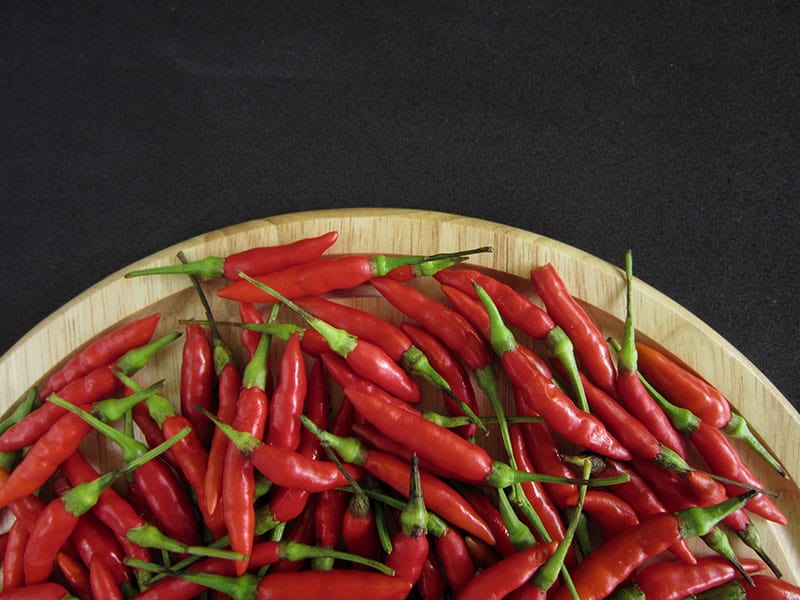
Scoville units: 80,000 – 100,000 SHU
Many people have mistaken siling Labuyo chili as Thai bird’s eye chilies. The reason for that is siling Labuyo is Filipino bird’s eye chili, which can reduplicate Thai varieties’ shape. Also, this chili type is not in the same species as Thai ones.
However, if you look closer, you will recognize some differences between these 2 appearances. Siling Labuyo is quite rounded and shorter than Thai chilies. Plus, their top is also less pointy.
Another surprising factor is this pepper is super hot and spicier than Thai bird’s eye chili. And due to their pungent heat, you can barely feel their flavor, even though they have a mild earthy taste.
So if you want to substitute it for Thai chili, you cannot expect a flavorful dish except their heat. Therefore, it would be better to use it in spicy dishes, soups, salads, or make spicy vinegar. Be noted that you also try with a little amount first, then taste and adjust.
Peri-peri Chili
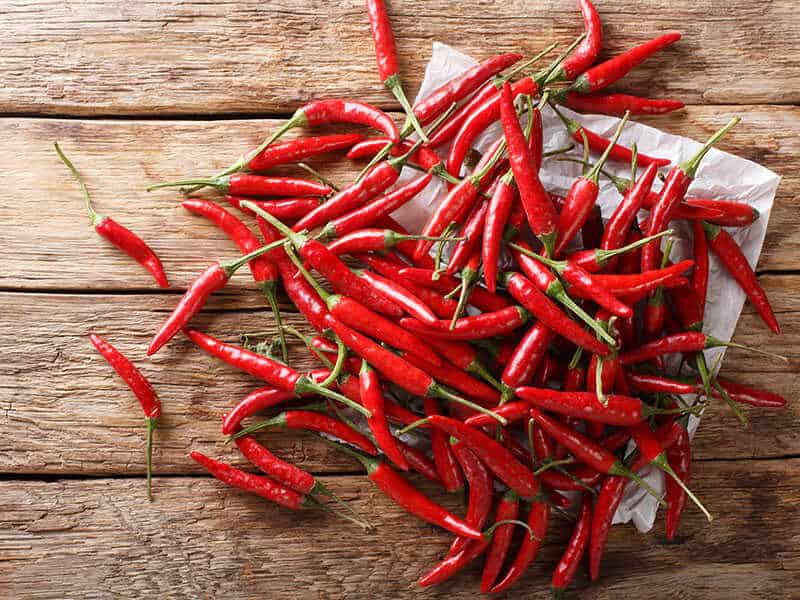
Scoville units: 50,000 – 100,000 units
Pepi-peri pepper (or African bird’s eye chili) is another solution when you cannot buy Thai pepper.
You might assume this chili is from Africa, right? In fact, many people claim they were from South America, then introduced to Africa firstly, and spread to India and Asia afterward.
Peri-peri pepper’s species is Capsicum frutescens, which is different from Thai’s species. However, they look similar to Thai bird’s eye chili with around 1 inch long and thin shape. And unripe pepi-peri also has green while mature ones are red or purple.
With the heat from 50,000 to 100,000 units, the spiciness of this chili pepper is somewhere between cayenne and habanero, like Thai chilies.
Moreover, as they have rich, sweet, and smoky undertones, you can replace Thai pepper with them; they can perfectly fit in meaty or vegetable sauces, salsa in both fresh or dried.
There is also a famous sauce made from peri-peri pepper that you can use to make marinades or as a condiment.
Chiltepin Pepper
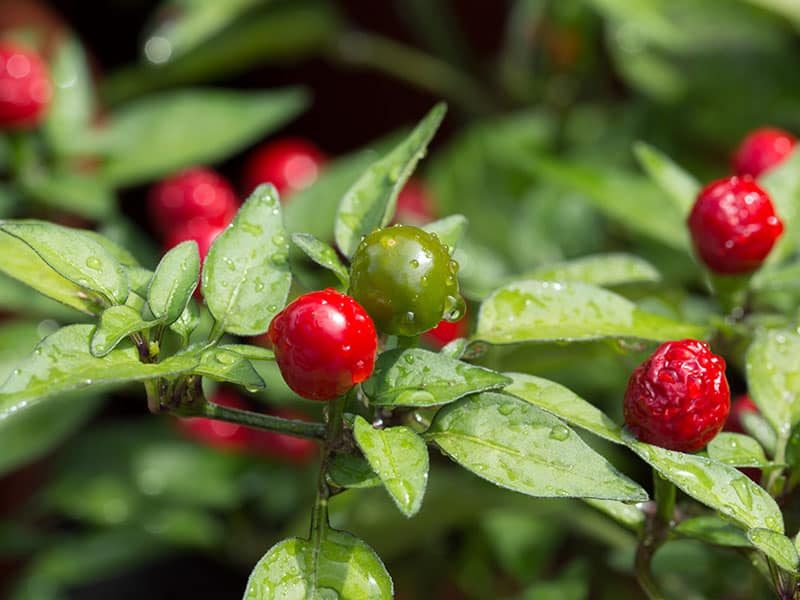
Scoville heat units: 50,000 – 100,000 SHU
Do you know that chiltepin is an American-originated pepper? And I bet you will be surprised with this chili’s shape. They come in a small round form that might be around 1/4 to 1/2 inches in length.
The similarities between chiltepin pepper and these Thai chilies are they belong to the same spice (Capsicum annuum) and have the same spiciness range level (from 50,000 to 100,000 SHU). Therefore, if you can buy some chiltepin at Walmart, use it to replace Thai chilies.
However, their flavor is different from Thai ones. Chiltepin has a smokey and earthy taste, so this replacement is excellent if you only need the heat for your dishes. Unripe green chiltepin tends to be hotter than ripe red chilies. But do not worry, their spiciness can calm down quickly.
Chiltepin pepper can be found in fresh and dried form. You can add them to your salsas, sauces, and even desserts. But since it is also hot, just add a small amount first and adjust based on your taste buds.
For more information about chiltepin peppers’ flavor, this taste test is what you should check.
FAQs
Above are all possible exchanges that you can try one day when you lack Thai chilies. If you are still unsure about it, here are some questions and answers that will give you a comprehensive look.
Let’s Get Ready To Be Wowed By The Spiciness!
These substitute solutions are from mildest to hottest chili peppers, so pick one and create your favorite spicy dish even without Thai chilies. In case you are willing to take a little risk, go for a super spicy type.
And please come back here to tell me about your tasting or cooking experience with these replacements; I’d love to hear your stories. Who knows, maybe after a few trials, you will be able to increase your tolerance for spicy foods.
Finally, please do not forget to like and share this article with everyone. Thank you so much for your support.
References
- En.wikipedia.org. 2021. Bird’s Eye Chili – Wikipedia.
- En.wikipedia.org. 2021. Habanero – Wikipedia.

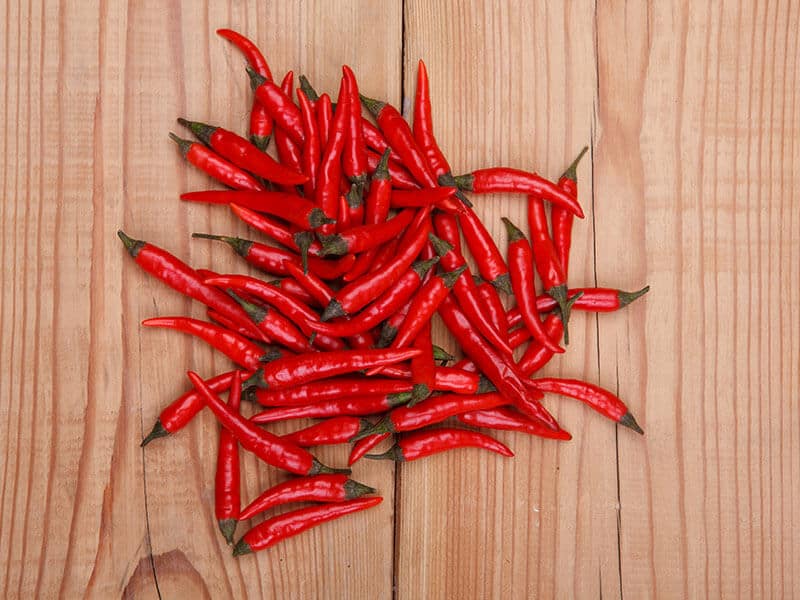
Liam O’Brien
Founder & Recipe Developer
Expertise
Education
Dublin Institute of Technology (now Technological University Dublin)
Ballymaloe Cookery School, County Cork, Ireland
Liam O’Brien is the co-founder and kitchen soul behind Good Tasting Meals, a chef who believes that cooking shouldn’t feel stressful or complicated.
He earned his culinary stripes at Technological University Dublin and polished his farm-to-table skills at Ballymaloe Cookery School. With over 15 years flipping pans and stirring up stories, Liam has worked in family cafés, bustling bistros, and everything in between.
At Good Tasting Meals, Liam brings you recipes that feel like home: cozy, simple, and full of flavor.